What is a Backplane PCB?
A backplane PCB (Printed Circuit Board) is a crucial component in modern electronics, acting as the backbone for connecting multiple electronic devices within a system. Its primary function is to provide a central interface, facilitating communication and data transfer among various components or subsystems.
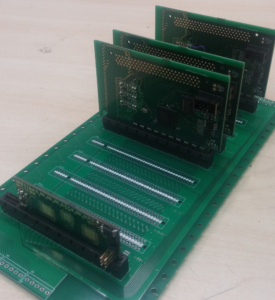
Design and Architecture
Backplane PCBs are not just about connectivity; they involve intricate design and architecture considerations. The design process often starts with a high-level functional block diagram, laying out the system’s overall framework.
The choice of connectors, defining the geometry for differential pairs, and preliminary stack-up are critical steps in backplane design. Furthermore, sketching a preliminary routing outline and making a pin-list summary can provide invaluable insights early in the design process.
Click to get PCB Assembly at PCBPit now >>
Electrical Design and Signal Integrity
The electrical design of a backplane PCB focuses on routing, power distribution, and component placement. High-speed data transfer capabilities come with challenges such as conductor skin effects, dielectric losses, return loss, impedance discontinuities, signal stubs, and noise degradation. Addressing these issues is essential for maintaining signal integrity and ensuring reliable system performance.
Techniques like signal integrity simulations, power integrity analysis, and thermal analysis are employed for validation and optimization.
Mechanical Design and Durability
Backplane PCBs must also endure mechanical stresses, requiring robust mechanical structures. Aspects like card guides, connector mounting, thermal management, and resistance to vibration and shock are crucial. Mechanical design considerations ensure that the PCB can withstand the physical demands of its environment, including temperature fluctuations and physical impacts.
Common Backplane Bus and Connection Types
Backplanes have evolved to include various bus and connection types, accommodating diverse technological needs. These include Industry Standard Architecture (ISA), Extended Industry Standard Architecture (EISA), Peripheral Component Interconnect (PCI), Compact PCI (cPCI), and VME Bus (VMEbus), among others. These connections cater to different data rates, signaling levels, and bandwidth requirements.
Form Factors and Specifications
Like motherboards, backplanes come in different design form factors, influencing the chassis size and power connections. Common form factors include Advanced Technology (AT), Low Profile eXtension (LPX), Advanced Technology Extended (ATX), and Nex Low-Profile Extended (NLX), each suited for specific applications and environments.
Backplane Vs. Midplane
Distinguishing between a backplane and a midplane is essential in understanding their applications. A midplane accepts connections on both sides, often found in large-scale computer systems and servers. In contrast, a backplane typically accepts connections on one side, situated at the rear end of a system.
Cick to get PCB Manufacturing Services at PCBPit >>
Advantages of Backplane PCBs
Backplane PCBs offer several advantages, including simple connectivity, enhanced scalability, increased reliability, and efficient power management. These benefits make them ideal for systems where component upgradability, system stability, and power distribution are crucial.
Challenges and Solutions in High-Speed Backplane Design
High-speed backplane design is challenging due to issues like signal integrity, impedance mismatches, and insertion losses. To combat these, designers must consider equalizer choice, material and component evaluation, and high-resolution measurements.
Employing a good Vector Network Analyzer (VNA) is also recommended for accurate assessments.
Layer Count and Thickness
Backplane PCBs can be quite complex, with up to 24 layers and several millimeters thick to accommodate all design requirements. This complexity highlights the need for meticulous planning in layer count, connector pinout, routing strategies, and via transitions.
Conclusion
In conclusion, backplane PCBs represent a significant technological advancement in the field of electronics. Their design and implementation require a deep understanding of both the electrical and mechanical aspects of PCB design.
The ongoing evolution of backplane technology continues to push the boundaries of what is possible in electronic systems, paving the way for more advanced and reliable solutions in the future.
Share:
More Posts
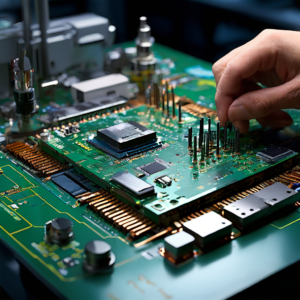
Trends and Challenges in PCB Manufacturing for 2024
Trends and Challenges in PCB Manufacturing for 2024 As we move into 2024, the printed circuit board (PCB) manufacturing industry continues to evolve rapidly, driven
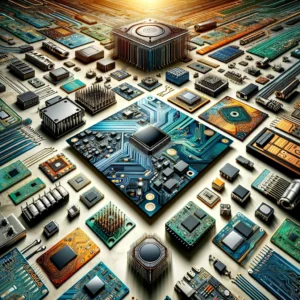
10 Best PCB Manufacturers in India
10 Best PCB Manufacturers in India The electronics manufacturing landscape in India has seen a significant transformation in recent years, with Printed Circuit Board (PCB)
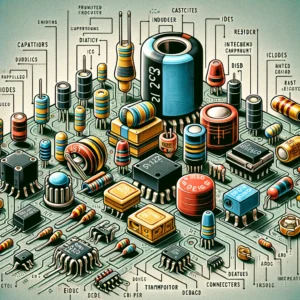
Identifying PCB Components: A Step-by-Step Guide
Identifying PCB Components: A Step-by-Step Guide Printed Circuit Boards (PCBs) are the backbone of modern electronic devices, from simple gadgets to complex machinery. Knowing how
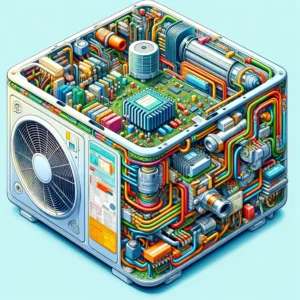
What is PCB in AC?
What is PCB in AC? Air conditioning has become an essential part of our daily lives, providing comfort and a conducive living environment regardless of

